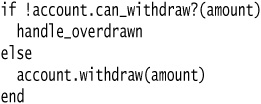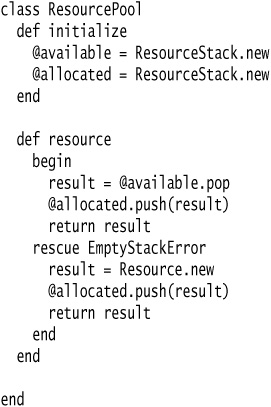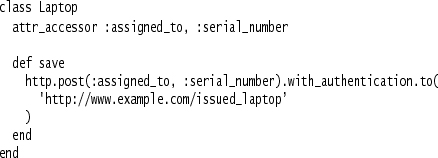Chapter 10. Making Method Calls Simpler
Objects are all about interfaces. Coming up with interfaces that are easy to understand and use is a key skill in developing good Object-Oriented software. This chapter explores refactorings that make interfaces more straightforward.
Often the simplest and most important thing you can do is to change the name of a method. Naming is a key tool in communication. If you understand what a program is doing, you should not be afraid to use Rename Method to pass on that knowledge. You can (and should) also rename variables and classes. On the whole these renamings are fairly simple text replacements, so I haven’t added extra refactorings for them.
Parameters themselves have quite a role to play with interfaces. Add Parameter and Remove Parameter are common refactorings. Programmers new to objects often use long parameter lists, which are typical of other development environments. Objects allow you to keep parameter lists short, and several more involved refactorings give you ways to shorten them. If you are passing several values from an object, use Preserve Whole Object to reduce all the values to a single object. If this object does not exist, you can create it with Introduce Parameter Object. If you can get the data from an object to which the method already has access, you can eliminate parameters with Replace Parameter with Method. If you have parameters that are used to determine conditional behavior, you can use Replace Parameter with Explicit Methods. You can combine several similar methods by adding a parameter with Parameterize Method.
Doug Lea, author of Concurrent Programming in Java, gave me a warning about refactorings that reduce parameter lists. Concurrent programming often uses long parameter lists. Typically this occurs so that you can pass in parameters that are immutable, as built-ins and value objects often are. Usually you can replace long parameter lists with immutable objects, but otherwise you need to be cautious about this group of refactorings.
One of the most valuable conventions I’ve used over the years is to clearly separate methods that change state (modifiers) from those that query state (queries). I don’t know how many times I’ve got myself into trouble, or seen others get into trouble, by mixing these up. So whenever I see them combined, I use Separate Query from Modifier to get rid of them.
Good interfaces show only what they have to and no more. You can improve an interface by hiding things. Of course all data should be hidden (I hope I don’t need to tell you to do that), but also any methods that can should be hidden. When refactoring you often need to make things visible for a while and then cover them up with Hide Method and Remove Setting Method.
Constructors are a particularly awkward feature of Ruby and Java, because they force you to know the class of an object you need to create. Often you don’t need to know this. The need to know can be removed with Replace Constructor with Factory Method.
Ruby, like many modern languages, has an exception-handling mechanism to make error handling easier. Programmers who are not used to this often use error codes to signal trouble. You can use Replace Error Code with Exception to use the new exceptional features. But sometimes exceptions aren’t the right answer; you should test first with Replace Exception with Test.
Rename Method
The name of a method does not reveal its purpose.
Change the name of the method.

Motivation
An important part of the code style I am advocating is small methods to factor complex processes. Done badly, this can lead you on a merry dance to find out what all the little methods do. The key to avoiding this merry dance is naming the methods. Methods should be named in a way that communicates their intention. A good way to do this is to think about the comment you would use to describe the method, and turn that comment into the name of the method.
Life being what it is, you won’t get your names right the first time. In this situation you may well be tempted to leave it—after all it’s only a name. That is the work of the evil demon Obfuscatis; don’t listen to him. If you see a badly named method, it is imperative that you change it. Remember your code is for a human first and a computer second. Humans need good names. Take note of when you have spent ages trying to do something that would have been easier if a couple of methods had been better named. Good naming is a skill that requires practice; improving this skill is the key to being a truly skillful programmer. The same applies to other aspects of the signature. If reordering parameters clarifies matters, do it (see Add Parameter and Remove Parameter).
Mechanics
1. Check to see whether the method signature is implemented by a superclass or subclass. If it is, perform these steps for each implementation.
2. Declare a new method with the new name. Copy the old body of code over to the new name and make any alterations to fit.
3. Change the body of the old method so that it calls the new one.
![]() If you only have a few references, you can reasonably skip this step.
If you only have a few references, you can reasonably skip this step.
4. Test.
5. Find all references to the old method name and change them to refer to the new one. Test after each change.
6. Remove the old method.
![]() If the old method is part of the published interface and you cannot get to all of its callers, leave it in place and mark it as deprecated.
If the old method is part of the published interface and you cannot get to all of its callers, leave it in place and mark it as deprecated.
7. Test.
Example
I have a method to get a person’s telephone number:

I want to rename the method to office_telephone_number. I begin by creating the new method and copying the body over to the new method. The old method now changes to call the new one:

Now I find the callers of the old method, and switch them to call the new one. When I have switched them all, I can remove the old method.
The procedure is the same if I need to add or remove a parameter.
If there aren’t many callers, I change the callers to call the new method without using the old method as a delegating method. If my tests throw a wobbly, I back out and make the changes the slow way.
Add Parameter
A method needs more information from its caller.
Add a parameter for an object that can pass on this information.

Motivation
Add Parameter is a common refactoring, one that you almost certainly have already done. The motivation is simple. You have to change a method, and the change requires information that wasn’t passed in before, so you add a parameter.
Actually most of what I have to say is motivation against doing this refactoring. Often you have other alternatives to adding a parameter. If available, these alternatives are better because they don’t lead to increasing the length of parameter lists. Long parameter lists smell bad because they are hard to remember and often involve data clumps.
Look at the existing parameters. Can you ask one of those objects for the information you need? If not, would it make sense to give them a method to provide that information? What are you using the information for? Should that behavior be on another object, the one that has the information? Look at the existing parameters and think about them with the new parameter. Perhaps you should consider Introduce Parameter Object.
I’m not saying that you should never add parameters; I do it frequently, but you need to be aware of the alternatives.
Mechanics
The mechanics of Add Parameter are similar to those of Rename Method.
1. Check to see whether this method signature is implemented by a superclass or subclass. If it is, check to see whether the parameter needs to be added for all implementations. If you decide not too add the parameter for any of the implementations, any calls to the implementation via super will have to be made explicitly with the receiving method’s parameter list.
2. Declare a new method with the added parameter. Copy the old body of code over to the new method.
![]() If you need to add more than one parameter, it is easier to add them at the same time.
If you need to add more than one parameter, it is easier to add them at the same time.
3. Change the body of the old method so that it calls the new one.
![]() If you only have a few references, you can reasonably skip this step.
If you only have a few references, you can reasonably skip this step.
![]() Add a default value for the new parameter. You can use any value for the default, but usually you use
Add a default value for the new parameter. You can use any value for the default, but usually you use nil or an empty Array or Hash.
4. Test.
5. Find all references to the old method and change them to refer to the new one. Test after each change.
![]() If the old method is part of the published interface and you cannot get to all of its callers, leave it in place and mark it as deprecated.
If the old method is part of the published interface and you cannot get to all of its callers, leave it in place and mark it as deprecated.
7. Test.
Remove Parameter
A parameter is no longer used by the method body.
Remove it.

Motivation
Programmers often add parameters but are reluctant to remove them. After all, a spurious parameter doesn’t cause any problems, and you might need it again later.
This is the demon Obfuscatis speaking; purge him from your soul! A parameter indicates information that is needed; different values make a difference. Your caller has to worry about what values to pass. By not removing the parameter you are making further work for everyone who uses the method. That’s not a good trade-off, especially because removing parameters is an easy refactoring.
Mechanics
The mechanics of Remove Parameter are similar to those of Rename Method and Add Parameter.
1. Check to see whether this method signature is implemented by a superclass or subclass. Check to see whether the subclass or superclass uses the parameter. If it does, don’t do this refactoring.
2. Declare a new method without the parameter. Ruby doesn’t allow method overloading, so you’ll have to give the new method a different name from the old one. This will only be temporary. Copy the old body of code to the new method.
![]() If you need to remove more than one parameter, it is easier to remove them together.
If you need to remove more than one parameter, it is easier to remove them together.
3. Change the body of the old method so that it calls the new one.
![]() If you only have a few references, you can reasonably skip this step.
If you only have a few references, you can reasonably skip this step.
4. Test.
5. Find all references to the old method and change them to refer to the new one. Test after each change.
6. Remove the old method.
![]() If the old method is part of the published interface and you cannot get to all of its callers, leave it in place and mark it as deprecated.
If the old method is part of the published interface and you cannot get to all of its callers, leave it in place and mark it as deprecated.
7. Test.
8. Use Rename Method to change the name of the new method to the old method’s name.
9. Because I’m pretty comfortable with adding and removing parameters, I often do a batch in one go.
Separate Query from Modifier
You have a method that returns a value and also changes the state of an object.
Create two methods, one for the query and one for the modification.

Motivation
When you have a function that gives you a value and has no observable side effects, you have a valuable thing. You can call this function as often as you like. You can move the call to other places in the method. In short, you have a lot less to worry about.
It is a good idea to clearly signal the difference between methods with side effects and those without. A good rule to follow is to say that any method that returns a value should not have observable side effects. Some programmers treat this as an absolute rule, including Bertrand Meyer, author of Object Oriented Software Constructionm [Meyer]. I’m not 100 percent sure on this (as on anything), but I try to follow it most of the time, and it has served me well.
It’s worth clarifying that in Ruby, every method returns some value (the return value of the last statement or nil). Here we’re talking about return values that are actually used by the caller.
If you come across a method that returns a value that is used by the caller and also has side effects, you should try to separate the query from the modifier.
Note I use the phrase observable side effects. A common optimization is to cache the value of a query in a field so that repeated calls go perform better. Although this changes the state of the object with the cache, the change is not observable. Any sequence of queries will always return the same results for each query [Meyer].
Mechanics
1. Create a query that returns the same value as the original method.
![]() Look in the original method to see what is returned. If the returned value is a temporary, look at the location of the temp assignment.
Look in the original method to see what is returned. If the returned value is a temporary, look at the location of the temp assignment.
2. Modify the original method so that it returns the result of a call to the query.
![]() Every return in the original method should say, “
Every return in the original method should say, “return new_query” (where new_query is the name of the new_query method), instead of returning anything else.
![]() If the method used a temp with a single assignment to capture the return value, you should be able to remove it.
If the method used a temp with a single assignment to capture the return value, you should be able to remove it.
3. Test.
4. For each call, replace the single call to the original method with a call to the query. Add a call to the original method before the line that calls the query. Test after each change to a calling method.
5. Remove the return expressions from the original method.
Example
Here is a function that tells me the name of a miscreant for a security system and sends an alert. The rule is that only one alert is sent even if there is more than one miscreant:
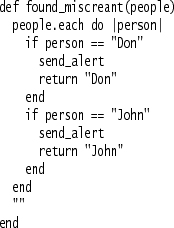
It is called by:

To separate the query from the modifier, I first need to create a suitable query that returns the same value as the modifier does but without the side effects.
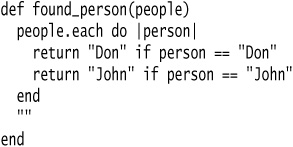
Then I replace every return in the original function, one at a time, with calls to the new query. I test after each replacement. When I’m done the original method looks like the following:

Now I alter all the calling methods to do two calls: first to the modifier and then to the query:

Once I have done this for all calls, I can alter the modifier to make it return nil:

Now it seems better to change the name of the original:
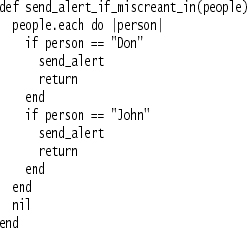
Of course in this case I have a lot of code duplication because the modifier uses the body of the query to do its work. I can now use Substitute Algorithm on the modifier to take advantage of this:

Concurrency Issues
If you are working in a multithreaded system, you know that doing test and set operations as a single action is an important idiom. Does this conflict with Separate Query from Modifier? I discussed this issue with Doug Lea, author of Concurrent Programming in Java, and concluded that it doesn’t. You do, however, need to do some additional things. It is still valuable to have separate query and modifier operations. However, you need to retain a third method that does both. The query-and-modify operation will call the separate query and modify methods and be synchronized. If the query and modify operations are not synchronized, you also might restrict their visibility to private level. That way you have a safe, synchronized operation decomposed into two easier-to-understand methods. These lower-level methods are then available for other uses.
Parameterize Method
Several methods do similar things but with different values contained in the method body.
Create one method that uses a parameter for the different values.
Motivation
You may see a couple of methods that do similar things but vary depending on a few values. In this case you can simplify matters by replacing the separate methods with a single method that handles the variations by parameters. Such a change removes duplicate code and increases flexibility, because you can deal with other variations by adding parameters.
Mechanics
1. Create a parameterized method that can be substituted for each repetitive method.
2. Replace one old method with a call to the new method.
3. Test.
4. Repeat for all the methods, testing after each one.
You may find that you cannot do this for the whole method, but you can for a fragment of a method. In this case, first extract the fragment into a method; then parameterize that method.
Example
The simplest case is methods along the following lines:

![]()
Of course that is so simple that anyone would spot it.
A less obvious case is as follows:

this can be replaced with:

The trick is to spot code that is repetitive on the basis of a few values that can be passed in as parameters.
Replace Parameter with Explicit Methods
You have a method that runs different code depending on the values of an enumerated parameter.
Create a separate method for each value of the parameter.
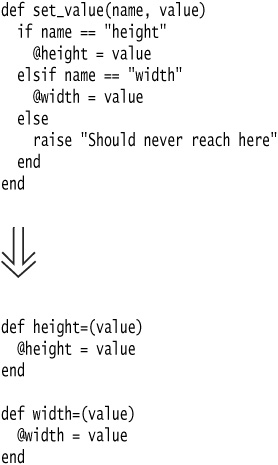
Motivation
Replace Parameter with Explicit Methods is the reverse of Parameterize Method. The usual case for the former is that you have discrete values of a parameter, test for those values in a conditional, and do different things. The caller has to decide what it wants to do by setting the parameter, so you might as well provide different methods and avoid the conditional. Furthermore your interface is also clearer. Switch.turn_on is a lot clearer than Switch.set_state(true), even when all you are doing is setting an internal boolean field.
With the parameter, any programmer using the method needs not only to look at the methods on the class but also to determine a valid parameter value. The latter is often poorly documented.
You shouldn’t use Replace Parameter with Explicit Methods when the parameter values are likely to change a lot. If this happens and you are just setting a field to the passed-in parameter, use a simple setter. If you need conditional behavior, you need Replace Conditional with Polymorphism.
Mechanics
1. Create an explicit method for each value of the parameter.
2. For each leg of the conditional, call the appropriate new method.
3. Test after changing each leg.
4. Replace each caller of the conditional method with a call to the appropriate new method.
5. Test.
6. When all callers are changed, remove the conditional method.
Example
I want to create a subclass of Employee on the basis of a passed-in parameter, often the result of Replace Constructor with Factory Method:

Because this is a factory method, I can’t use Replace Conditional with Polymorphism, because I haven’t created the object yet. I don’t expect too many new subclasses, so an explicit interface makes sense. First I create the new methods:

One by one I replace the cases in the case statement with calls to the explicit methods:

I test after changing each leg, until I’ve replaced them all:
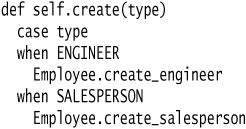
Now I move on to the callers of the old create method. I change code such as:
kent = Employee.create(Employee::ENGINEER)
to
kent = Employee.create_engineer
Once I’ve done that for all the callers of create, I can remove the create method. I may also be able to get rid of the constants.
Preserve Whole Object
You are getting several values from an object and passing these values as parameters in a method call.
Send the whole object instead.

Motivation
This type of situation arises when an object passes several data values from a single object as parameters in a method call. The problem with this is that if the called object needs new data values later, you have to find and change all the calls to this method. You can avoid this by passing in the whole object from which the data came. The called object can then ask for whatever it wants from the whole object.
In addition to making the parameter list more robust to changes, Preserve Whole Object often makes the code more readable. Long parameter lists can be hard to work with because both caller and callee have to remember which values were there. They also encourage duplicate code because the called object can’t take advantage of any other methods on the whole object to calculate intermediate values.
There is a down-side. When you pass in values, the called object has a dependency on the values, but there isn’t any dependency to the object from which the values were extracted. Passing in the required object causes a dependency between the required object and the called object. If this is going to mess up your dependency structure, don’t use Preserve Whole Object.
Another reason I have heard for not using Preserve Whole Object is that when a calling object needs only one value from the required object, it is better to pass in the value than to pass in the whole object. I don’t subscribe to that view. One value and one object amount to the same thing when you pass them in, at least for clarity’s sake (there may be a performance cost with pass by value parameters). The driving force is the dependency issue.
That a called method uses a lot of values from another object is a signal that the called method should really be defined on the object from which the values come. When you are considering Preserve Whole Object, consider Move Method as an alternative.
You may not already have the whole object defined. In this case you need Introduce Parameter Object.
A common case is that a calling object passes several of its own data values as parameters. In this case you can make the call and pass in self instead of these values, if you have the appropriate accessor methods and you don’t mind the dependency.
Mechanics
1. Create a new parameter for the whole object from which the data comes.
2. Test.
3. Determine which parameters should be obtained from the whole object.
4. Take one parameter and replace references to it within the method body by invoking an appropriate method on the whole object parameter.
6. Test.
7. Repeat for each parameter that can be got from the whole object.
8. Remove the code in the calling method that obtains the deleted parameters.
![]() Unless, of course, the code is using these parameters somewhere else.
Unless, of course, the code is using these parameters somewhere else.
9. Test.
Motivation
Consider a Room object that records high and low temperatures during the day. It needs to compare this range with a range in a predefined heating plan:

Rather than unpack the range information when I pass it, I can pass the whole range object. In this simple case I can do this in one step. When more parameters are involved, I can do it in smaller steps. First I add the whole object to the parameter list:

Then I use a method on the whole object instead of one of the parameters:

I continue until I’ve changed all I need:
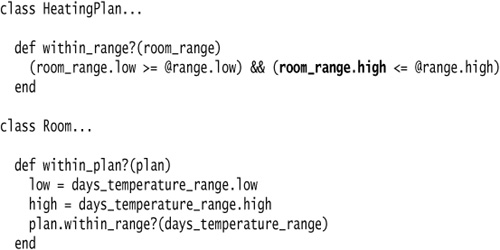
Now I don’t need the temps anymore:
Using whole objects this way soon leads you to realize that you can usefully move behavior into the whole object to make it easier to work with.
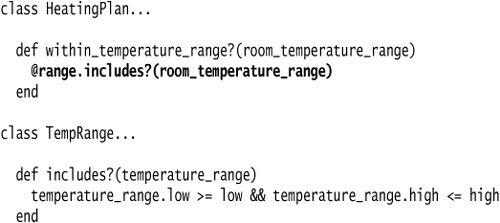
Replace Parameter with Method
An object invokes a method, then passes the result as a parameter for a method. The receiver can also invoke this method.
Remove the parameter and let the receiver invoke the method.

Motivation
If a method can get a value that is passed in as parameter by another means, it should. Long parameter lists are difficult to understand, and we should reduce them as much as possible.
One way of reducing parameter lists is to look to see whether the receiving method can make the same calculation. If an object is calling a method on itself, and the calculation for the parameter does not reference any of the parameters of the calling method, you should be able to remove the parameter by turning the calculation into its own method. This is also true if you are calling a method on a different object that has a reference to the calling object.
You can’t remove the parameter if the calculation relies on a parameter of the calling method, because that parameter may change with each call (unless, of course, that parameter can be replaced with a method). You also can’t remove the parameter if the receiver does not have a reference to the sender, and you don’t want to give it one.
In some cases the parameter may be there for a future parameterization of the method. In this case I would still get rid of it. Deal with the parameterization when you need it; you may find out that you don’t have the right parameter anyway. I would make an exception to this rule only when the resulting change in the interface would have painful consequences around the whole program, such as changing of a lot of embedded code. If this worries you, look into how painful such a change would really be. You should also look to see whether you can reduce the dependencies that cause the change to be so painful. Stable interfaces are good, but freezing a poor interface is a problem.
Mechanics
1. If necessary, extract the calculation of the parameter into a method.
2. Replace references to the parameter in method bodies with references to the method.
3. Test after each replacement.
4. Use Remove Parameter on the parameter.
Example
Another unlikely variation on discounting orders is as follows:
I can begin by extracting the calculation of the discount level:
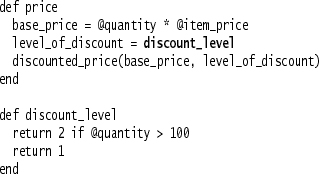
I then replace references to the parameter in discounted_price:

Then I can use Remove Parameter:
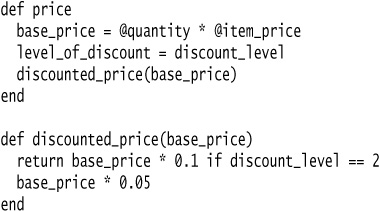
I can now get rid of the temp:
Then it’s time to get rid of the other parameter and its temp. I am left with:

so I might as well use Inline Method on discounted_price:

Introduce Parameter Object
You have a group of parameters that naturally go together.
Replace them with an object.

Motivation
Often you see a particular group of parameters that tend to be passed together. Several methods may use this group, either on one class or in several classes. Such a group of classes is a data clump and can be replaced with an object that carries all of this data. It is worthwhile to turn these parameters into objects just to group the data together. This refactoring is useful because it reduces the size of the parameter lists, and long parameter lists are hard to understand. The defined accessors on the new object also make the code more consistent, which again makes it easier to understand and modify.
You get a deeper benefit, however, because once you have clumped together the parameters, you soon see behavior that you can also move into the new class. Often the bodies of the methods have common manipulations of the parameter values. By moving this behavior into the new object, you can remove a lot of duplicated code.
Mechanics
1. Create a new class to represent the group of parameters you are replacing. Make the class immutable.
2. Use Add Parameter for the new data clump. Use a default value for the new parameter.
3. For each parameter in the data clump, remove the parameter from the signature. Modify the callers and method body to use the parameter object for that value.
4. Test after you remove each parameter.
5. When you have removed the parameters, look for behavior that you can move into the parameter object with Move Method.
![]() This may be a whole method or part of a method. If it is part of a method, use Extract Method first and then move the new method over.
This may be a whole method or part of a method. If it is part of a method, use Extract Method first and then move the new method over.
6. Be sure to remove the default value for the new parameter. The method is not intended to be used without the parameter. Leaving it in would only cause confusion.
Example
I begin with an account that holds a collection of charges for items. Each charge is determined by a calculation based on base price, tax rate, and whether the item is imported:
The base_price, tax_rate, and imported status naturally go together, so I group them in a Charge object:
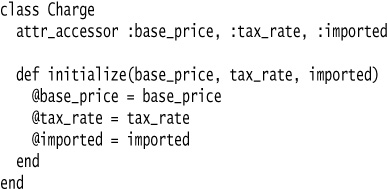
I’ve made the Charge class immutable; that is, all the values for the charge are set in the constructor, hence there are no methods for modifying the values. This is a wise move to avoid aliasing bugs.
Next I add the charge into the parameter list for the add_charge method:

At this point I haven’t altered any behavior.
The next step is to remove one of the parameters and use the new object instead. To do this I delete the base_price parameter and modify the method and its callers to use the new object instead:

I then remove the other two parameters:

I have introduced the parameter object; however, I can get more value from this refactoring by moving behavior from other methods to the new object. In this case I can take the code to perform the charge calculation and use Extract Method and Move Method to add the method to the Charge object. I can also remove the readers on the Charge object, improving encapsulation.

I usually do simple extracts and moves such as this in one step. If I run into a bug, I can back out and take the two smaller steps.
Remove Setting Method
A field should be set at creation time and never altered.
Remove any setting method for that field.
Motivation
Providing a setting method indicates that a field may be changed. If you don’t want that field to change once the object is created, don’t provide a setting method. That way your intention is clear and you often remove the possibility that the field will change.
This situation often occurs when programmers blindly use indirect variable access [Beck]. Such programmers then use setters even in a constructor. I guess there is an argument for consistency but not compared with the confusion that the setting method will cause later on.
Mechanics
1. Check that the setting method is called only in the constructor, or in a method called by the constructor.
2. Modify the constructor to access the variables directly.
3. Test.
4. Remove the setting method.
5. Test.
Example
A simple example is as follows:

which can be replaced with

The problems come in some variations. First is the case in which you are doing computation on the argument:

If the change is simple (as here), I can make the change in the constructor. If the change is complex or I need to call it from separate methods, I need to provide a method. In that case I need to name the method to make its intention clear:

Another case to consider is setting the value of a collection:
Here I want to replace the setter with add and remove operations. I talk about this in Encapsulate Collection.
Hide Method
A method is not used by any other class.
Make the method private.

Motivation
Refactoring often causes you to change decisions about the visibility of methods. It is easy to spot cases in which you need to make a method more visible: Another class needs it and you thus relax the visibility. It is somewhat more difficult to tell when a method is too visible. Ideally a tool should check all methods to see whether they can be hidden. If it doesn’t, you should make this check at regular intervals.
A particularly common case is hiding, getting, and setting methods as you work up a richer interface that provides more behavior. This case is most common when you are starting with a class that is little more than an encapsulated data holder. As more behavior is built into the class, you may find that many of the getting and setting methods are no longer needed publicly, in which case they can be hidden. If you make a getting or setting method private and you are using direct variable access, you can remove the method.
Mechanics
1. Check regularly for opportunities to make a method more private.
![]() Use a lint-style tool, do manual checks every so often, and check when you remove a call to a method in another class.
Use a lint-style tool, do manual checks every so often, and check when you remove a call to a method in another class.
![]() Particularly look for cases such as this with setting methods.
Particularly look for cases such as this with setting methods.
2. Make each method as private as you can.
3. Test after doing a group of hidings.
Replace Constructor with Factory Method
You want to do more than simple construction when you create an object.
Replace the constructor with a factory method.

Motivation
The most obvious motivation for Replace Constructor with Factory Method is when you have conditional logic to determine the kind of object to create. If you need to do this conditional logic in more than one place, it’s time for a Factory Method.
You can use factory methods for other situations in which constructors are too limited. Factory methods are essential for Change Value to Reference. They also can be used to signal different creation behavior that goes beyond the number and types of parameters.
Mechanics
1. Perform Extract Method to isolate the construction logic.
![]() Make the newly extracted method a class method. Pass in any required data as parameters.
Make the newly extracted method a class method. Pass in any required data as parameters.
2. Test.
3. If the factory method is not on the desired object, use Move Method.
4. Test.
5. Remove the original constructor if no one else is using it.
6. Test.
Example
In this example we are creating products. The type of product we want to create depends on the product’s base price, and whether it is imported from another country.
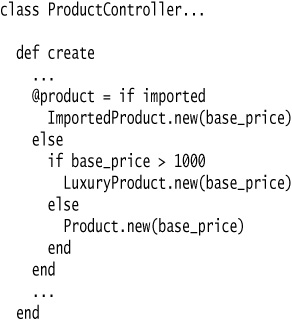
We might have an inheritance hierarchy to represent the products.

There are two motivations here for using Replace Constructor with Factory Method. The first comes about if we need to perform this construction logic in more than one place. We don’t want to introduce duplication, so extracting this construction logic to a factory method makes sense. The second motivation is encapsulation. If we can push this logic that uses the product’s attributes onto the product object itself, we’ll be able to accommodate changes to this logic more easily in the future.
The first step is to perform Extract Method on the construction logic. We’ll make the extracted method a class method (so that it’s easy to turn into a factory method).

We can then use Move Method to move the method to a more appropriate place—the Product class.

Since no one else is using Product’s initialize method, we can remove it.
Replace Error Code with Exception
A method returns a special code to indicate an error.
Raise an exception instead.

Motivation
In computers, as in life, things go wrong occasionally. When things go wrong, you need to do something about it. In the simplest case, you can stop the program with an error code. This is the software equivalent of committing suicide because you miss a flight. (If I did that I wouldn’t be alive even if I were a cat.) Despite my glib attempt at humor, there is merit to the software suicide option. If the cost of a program crash is small and the user is tolerant, stopping the program is fine. However, more important programs need more important measures.
The problem is that the part of a program that spots an error isn’t always the part that can figure out what to do about it. When such a routine finds an error, it needs to let its caller know, and the caller may pass the error up the chain. In many languages a special output is used to indicate error. Unix and C-based systems traditionally use a return code to signal success or failure of a routine.
Ruby has a better way: exceptions. Exceptions are better because they clearly separate normal processing from error processing. This makes programs easier to understand, and as I hope you now believe, understandability is next to godliness.
Mechanics
1. Find all the callers and adjust them to use the exception.
![]() Decide whether the caller should check for the condition before making the call or rescue the exception.
Decide whether the caller should check for the condition before making the call or rescue the exception.
2. Test after each such change.
3. Use Rename Method if there is a more appropriate name for the method given the changes.
If you have many callers, this can be too big a change. You can make it more gradual with the following steps:
1. Create a new method that uses the exception.
2. Modify the body of the old method to call the new method.
3. Test.
4. Adjust each caller of the old method to call the new method. Test after each change.
5. Delete the old method.
Example
Isn’t it strange that computer textbooks often assume you can’t withdraw more than your balance from an account, although in real life you often can?
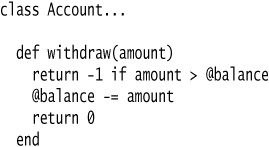
In Ruby, there are no “checked” exceptions, as there are in Java. So all that is left to decide is how to handle the error. Should the caller check for the error condition before calling the method, or should it rescue the exception? I look to the likelihood of the error condition occurring to help me decide. If the error is likely to occur in normal processing, then I would make the caller check the condition before calling. If the error is not likely to occur, then I would rescue the exception.
Example: Caller Checks Condition Before Calling
First I look at the callers. In this case nobody should be using the return code because it is a programmer error to do so. If I see code such as:

I need to replace it with code such as:
I can test after each change.
Now I need to remove the error code and raise an exception for the error case. Because the behavior is (by definition) exceptional, I should use a guard clause for the condition check:

Because it is a programmer error, I should signal even more clearly by using an assertion:

Example: Caller Catches Exception
I handle the “caller catches exception” case slightly differently. First I create (or use) an appropriate new exception:
![]()
Then I adjust the callers to look like:

Now I change the withdraw method to use the exception:

If there are a lot of callers, this can be too large a change without being able to test as you go.
For these cases I can use a temporary intermediate method. I begin with the same case as before:
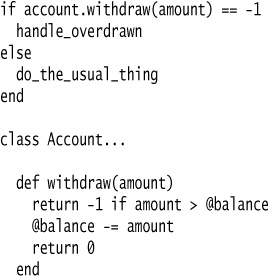
The first step is to create a new withdraw method that uses the exception:

Next I adjust the current withdraw method to use the new one:
![]()
With that done, I can test. Now I can replace each of the calls to the old method with a call to the new one:

With both old and new methods in place, I can test after each change. When I’m finished, I can delete the old method and use Rename Method to give the new method the old name.
Replace Exception with Test
You are raising an exception on a condition the caller could have checked first.
Change the caller to make the test first.

Motivation
Exceptions are an important advance in programming languages. They allow us to avoid complex codes by use of Replace Error Code with Exception. Like so many pleasures, exceptions can be used to excess, and they cease to be pleasurable. Exceptions should be used for exceptional behavior: behavior that is an unexpected error. They should not act as a substitute for conditional tests. If you can reasonably expect the caller to check the condition before calling the operation, you should provide a test, and the caller should use it.
Mechanics
1. Put a test up front and copy the code from the rescue clause into the appropriate leg of the if statement.
2. Add an assertion to the rescue clause to notify you whether the rescue clause is executed.
3. Test.
4. Remove the rescue clause and the begin block if there are no other rescue clauses.
5. Test.
Example
For this example I use an object that manages resources that are expensive to create but can be reused. Database connections are a good example of this. Such a manager has two pools of resources, one that is available for use and one that is allocated. When a client wants a resource, the pool hands it out and transfers it from the available pool to the allocated pool. When a client releases a resource, the manager passes it back. If a client requests a resource and none is available, the manager creates a new one.
The method for giving out resources might look like this:

In this case running out of resources is not an unexpected occurrence, so I should not use an exception.
To remove the exception I first add an appropriate up-front test and do the empty behavior there:

With this the exception should never occur. I can add an assertion to check this:

Now I can test. If all goes well, I can remove the begin-rescue block completely:
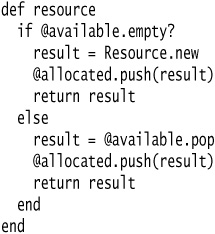
After this I usually find I can clean up the conditional code. Here I can use Consolidate Duplicate Conditional Fragments:
Introduce Gateway
You want to interact with a complex API of an external system or resource in a simplified way.
Introduce a Gateway that encapsulates access to an external system or resource.

Motivation
Interesting software rarely lives in isolation. Even the purest Object-Oriented system often has to deal with things that aren’t objects. The majority of Rails applications use ActiveRecord as a Gateway to a relational database. Additionally, Ruby applications often make use of YAML files and connection to one or more Web services.
When accessing external systems or resources, you’ll usually get APIs for them. However, these APIs are naturally going to be somewhat complicated because they are designed to be flexible and reusable for various consumers. Anyone who needs to understand a resource needs to understand its API. Not only does this make the software harder to understand, it also makes it much harder to change should you shift some data from a relational database to an XML message at some point in the future.
Mechanics
1. Introduce a Gateway that uses the underlying API.
2. Change one use of the API to use the Gateway instead.
3. Test.
4. Change all other uses of the API to use the Gateway instead.
5. Test.
Example
Imagine we are working with an application that uses Web Services to persist all its data. The save methods of the domain objects could be implemented using the net/http library included in the Ruby Standard Library.
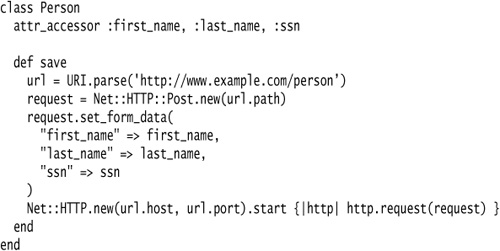
Unfortunately, we are working with a few different services provided by different teams. Because the teams are different they’ve chosen to create their Web services in different ways. Some teams allow you to post form data; others require that you send over get requests. Additionally, there’s the matter of authentication. Some use IPs to trust internal calls, but others require you to use basic HTTP authentication. In the end, each save method is similar, but not similar enough that Form Template Method can be easily applied.
The following are a few more example domain objects that demonstrate the differences between the save methods.

The solution is to create a Gateway that simplifies the API for consumption, but simply delegates behind the scenes to net/http.
We’ll begin by creating the Gateway and only giving it the methods required by the Person class.

Now the Person class can be updated to use the new Gateway class.

Next we update the Gateway to support the Company class. The Company class introduces the need for supporting both get and post. To support both we’re going to introduce the PostGateway and the GetGateway.
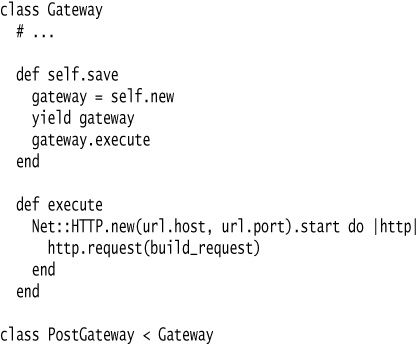
The Company class can now use the GetGateway, and the Person class can use the PostGateway.
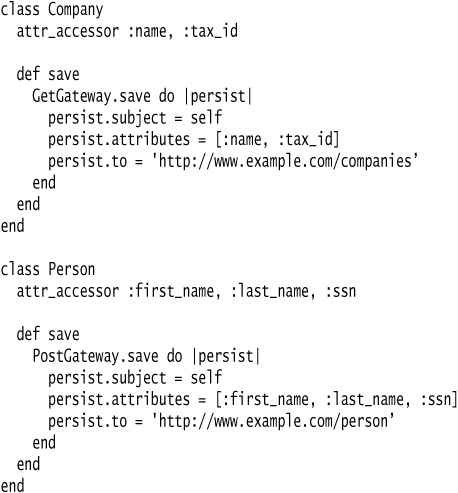
Next, authentication support must be added to the Gateway for the Laptop class.

With support in place for authentication the last thing to do is change the Laptop to take advantage of the Gateway.

We can then use Introduce Expression Builder to interact with the Gateway in a more fluent manner. This example is continued there.
Introduce Expression Builder
You want to interact with a public interface in a more fluent manner and not muddy the interface of an existing object.
Introduce an Expression Builder and create an interface specific to your application.
Motivation
APIs are usually designed to provide a set of self-standing methods on objects; ideally these methods can be understood individually. This is in contrast to a fluent interface that is designed around the readability of a whole expression. Fluent interfaces often lead to methods that make little sense individually.
An Expression Builder provides a fluent interface as a separate layer on top of the regular API. It has one job—to supply the fluent interface—leaving the original object to provide the interface that can be understood on a method-by-method basis.
Mechanics
1. Change the calling code to use the fluent interface.
![]() The fluent interface is much easier to design by writing the client code first.
The fluent interface is much easier to design by writing the client code first.
2. Create an Expression Builder that uses the original object.
3. Change one use of the original object to use the Expression Builder instead.
4. Test.
5. Change all other uses of the original object to use the Expression Builder instead.
6. Test.
Example
Imagine we are working with an application that uses Web services to persist all its data. We’re going to build on the example used in Introduce Gateway.
Currently, the Person, Company, and Laptop classes are defined as follows.
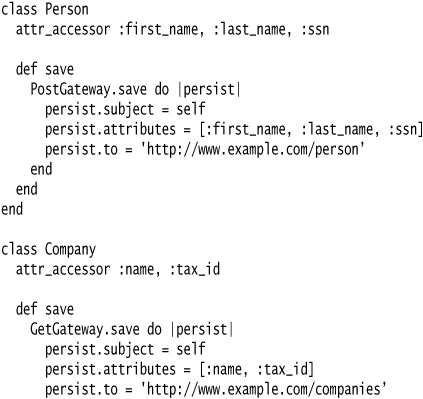
The Person, Company, and Laptop classes use the Gateway to hide the complexity of the underlying API, but the Gateway interface can be made more fluent.
The solution is to create an Expression Builder that exposes a fluent interface for consumption, but simply delegates behind the scenes to the Gateway.
We’ll begin by writing the Ruby that we’d like to use in our Person class.

There’s a couple of ways that we could implement this interface. We could make the http method return the relevant Gateway class, and add a post method and to method to the Gateway. The problem with this is that a method called “to” makes no sense outside the context of the fluent expression. Defining to on the Gateway class would muddy its interface.
A better option is to create a class whose sole responsibility is to provide our desired fluent interface. It can delegate to the relevant Gateway object to do the real work. That way, the Gateway objects’ interfaces can all be easily understood in isolation, yet we can still have our fluent calling code.
In this example we’ll create a GatewayExpressionBuilder class to provide the fluency. Our http method will return an instance of this class.

Next we’ll change the Company class to use a fluent interface. Again we will create the fluent interface before worrying about the implementation.

As the preceding example shows, while creating our fluent interface we noticed that the http method was common and went ahead with extracting that to a base class.
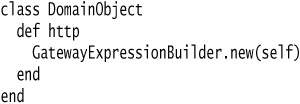
Now that we know what interface the Company class would like to use we can update the GatewayExpressionBuilder class. The Company class introduces the need for supporting both the GetGateway and the PostGateway. This is fairly easily handled by storing the desired Gateway subclass class as an instance variable. In the to method we’ll use the @gateway instead of hard-coding which Gateway to use.

Again, we’ll create our fluent interface for Laptop first and worry about implementing the required methods when we know what we want.
The final change to GatewayExpressionBuilder is to add support for authentication.
















